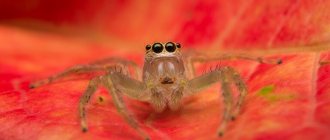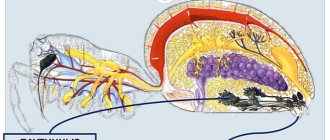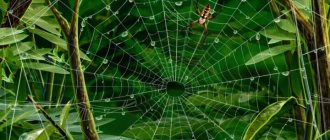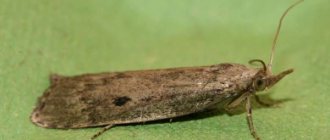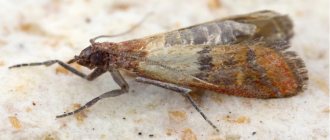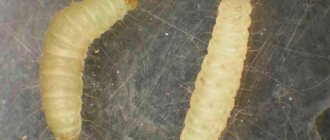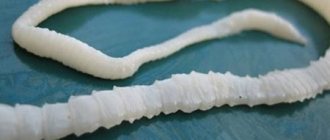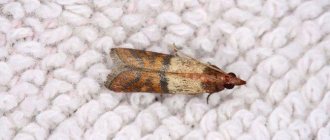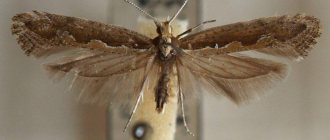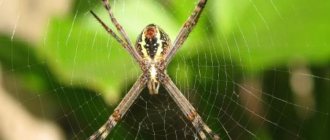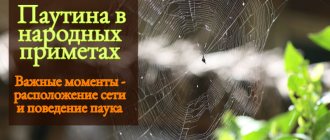Many animals know how to build homes and traps using available materials. For example, almost all birds make their own nests, and bees create huge hives. But some of the most complex structures are created by spiders, which secrete webs from their glands and weave traps for their victims. When prey is caught on sticky threads, each spider quickly rushes to it to sprinkle it with poison to turn all the insides into a nutrient mixture. Scientists have been monitoring these amazing creatures for many years and discover something new every time. For example, scientists from the US state of Maryland recently used night vision cameras and artificial intelligence to better understand the method of weaving spider webs. It turned out to be quite an interesting video.
Artificial intelligence has suggested how spiders weave their webs
What is a web?
Spiders are one of the oldest inhabitants of the planet; due to their small size and specific appearance, they are mistakenly considered insects. In fact, these are representatives of the order of arthropods. The spider's body has eight legs and two sections:
- cephalothorax;
- abdomen.
Unlike insects, they do not have antennae and a neck separating the head from the chest. The abdomen of an arachnid is a kind of factory for the production of cobwebs. It contains glands that produce a secretion consisting of protein enriched with alanine, which gives strength, and glycine, which is responsible for elasticity. According to the chemical formula, cobwebs are close to insect silk. Inside the glands, the secretion is in a liquid state, but when exposed to air it hardens.
Information. The silk of silkworm caterpillars and spider webs have a similar composition - 50% is fibroin protein. Scientists have found that spider thread is much stronger than caterpillar secretion. This is due to the peculiarity of fiber formation
How and how long do spiders weave webs?
The spider weaves the most famous circular web for 0.5–3 hours. The duration of weaving depends on the size of the mesh and the weather. In this case, the wind usually becomes the best assistant, carrying the thread released by the spider over considerable distances.
It is in the direction of the wind that the web stretched between the trees is located. A thin thread is carried by the air flow, clings to a nearby tree and perfectly withstands the movements of its creator.
Familiarize yourself with the types of spiders.
He periodically renews the woven net, as over time it loses its ability to hold prey.
The spider usually eats old webs to provide itself with the building material needed to weave a new product. Automatic actions for building a network are laid down at the genetic level and are inherited.
Where does a spider's web come from?
On the abdomen of the arthropod there are outgrowths - arachnoid warts. In their upper part, the channels of the arachnoid glands open, forming threads. There are 6 types of glands that produce silk for different purposes (moving, lowering, entangling prey, storing eggs). In one species, all these organs do not occur at the same time; usually an individual has 1-4 pairs of glands.
On the surface of warts there are up to 500 spinning tubes that supply protein secretion. The spider spins its web as follows:
- spider warts are pressed against the base (tree, grass, wall, etc.);
- a small amount of protein adheres to the selected location;
- the spider moves away, pulling the thread with its hind legs;
- for the main work, long and flexible front legs are used, with their help a frame is created from dry threads;
- The final stage of making the network is the formation of sticky spirals.
Thanks to the observations of scientists, it became known where the spider’s web comes from. It is produced by movable paired warts on the abdomen.
Interesting fact. The web is very light; the weight of a thread wrapping the Earth along the equator would be only 450 g.
What does it consist of and where is it formed?
The composition of the web includes the following substances:
- organic compounds - fibroin protein, which makes up the main internal thread, and glycoproteins that form nanofibers located around the main thread. Thanks to fibroin, the web is similar in composition to silk, but much more elastic and stronger;
- inorganic substances - chemical compounds of potassium (hydrogen phosphate and nitrate). Their number is small, but they give the web antiseptic properties and protect it from fungi and bacteria, creating a favorable environment in the spider’s glands for the formation of threads.
We recommend reading about why people are afraid of spiders and what the phobia is called.
In the abdomen of the spider there are arachnoid glands, where a liquid substance is formed that comes out through spinning tubes located on the arachnoid warts. They can be observed at the very bottom of the abdomen.
A viscous liquid comes out of the tube and quickly hardens in air. Using its hind legs, the spider pulls out the thread and uses it for weaving. One spider is capable of producing a thread 0.5 km long.
Did you know? Our most common spider, the cross spider, weaves the most famous round trapping net.
The spider always weaves a structure of 39 rays, on which there are 35 spiral circles with 1245 fasteners. Cross workers do this work at night and update the network every 1–2 days.
How to build a fishing net
The wind is the spider's best assistant in construction. Having taken out a thin thread from the warts, the arachnid exposes it to an air flow, which carries the frozen silk over a considerable distance. This is the secret way a spider weaves a web between trees. The web easily clings to tree branches, using it as a rope, the arachnid moves from place to place.
A certain pattern can be traced in the structure of the web. Its basis is a frame of strong and thick threads arranged in the form of rays diverging from one point. Starting from the outer part, the spider creates circles, gradually moving towards the center. It is amazing that without any equipment it maintains the same distance between each circle. This part of the fibers is sticky and is where insects will get stuck.
Interesting fact. The spider eats its own web. Scientists offer two explanations for this fact - in this way, the loss of protein during the repair of the fishing net is replenished, or the spider simply drinks water hanging on the silk threads.
The complexity of the web pattern depends on the type of arachnid. Lower arthropods build simple networks, while higher ones build complex geometric patterns. It is estimated that the female crosstail builds a trap of 39 radii and 39 spirals. In addition to smooth radial threads, auxiliary and catcher spirals, there are signal threads. These elements capture and transmit to the predator the vibrations of the caught prey. If a foreign object (a branch, a leaf) comes across, the little owner separates it and throws it away, then restores the net.
Large arboreal arachnids pull traps with a diameter of up to 1 m. Not only insects, but also small birds fall into them.
Why don't they stick on their own?
In order to calmly move around the trap and not become its victim, the spider stretches dry threads, without an adhesive substance. He navigates the structure, so he knows which part of the fiber is intended for extraction and which is safe for him. He waits for the victim in the center of the building.
Additional factors that help the spider not stick to its own web:
- the tips of the predator's paws are lubricated with an oily liquid;
- there are many hairs on its limbs that reduce the area of contact with the sticky threads;
- it moves in a special way.
Modern scientists have not yet learned how to create a web artificially. But attempts to make an exact copy of it continue. Geneticists from Canada have artificially bred goats whose milk contains spider protein. Just like a spider makes a web, the technology of weaving it is a mystery of nature that the greatest minds have not solved.
Nature took care of the existence of spiders and gave them the ability to skillfully weave webs. It helps them obtain food, protect their offspring and their home, and also use it for transportation purposes. The openwork trap is attracting worldwide interest due to its mystery and the impossibility of artificial reproduction. Each type of arachnid arouses the deepest interest and amazes with its specific features.
Purpose of the web
Fine nets are not only insect traps. The role of the web in the life of arachnids is much broader.
Catching prey
All spiders are predators, killing their prey with poison. Moreover, some individuals have a fragile constitution and can themselves become victims of insects, for example, wasps. To hunt, they need shelter and a trap. Sticky fibers perform this function. They entangle the prey caught in the net in a cocoon of threads and leave it until the injected enzyme brings it into a liquid state.
Arachnid silk fibers are thinner than human hair, but their specific tensile strength is comparable to steel wire.
Reproduction
During the mating period, males attach their own threads to the female's web. By striking the silk fibers rhythmically, they communicate their intentions to a potential partner. The female receiving courtship descends onto the male’s territory to mate. In some species, the female initiates the search for a partner. She secretes a thread with pheromones, thanks to which the spider finds her.
Home for posterity
Cocoons for eggs are woven from the silky web secretion. Their number, depending on the type of arthropod, is 2-1000 pieces. The females hang the web sacs with eggs in a safe place. The cocoon shell is quite strong; it consists of several layers and is impregnated with liquid secretion.
In their burrow, arachnids weave webs around the walls. This helps create a favorable microclimate and serves as protection from bad weather and natural enemies.
Moving
One of the answers to why a spider weaves a web is that it uses threads as a vehicle. To move between trees and bushes, quickly understand and fall, it needs strong fibers. To fly over long distances, spiders climb to elevated heights, release a quickly hardening web, and then with a gust of wind they fly away for several kilometers. Most often, trips are made on warm, clear days of Indian summer.
Usage and Functions
Spider web fiber is very strong, comparable to the density of nylon. According to some opinions, this is because the spider creates it while hanging on the same fiber.
It has interesting features:
- Tension. Even though the threads are compressed or stretched, they return to their usual place.
- Articulation. An object in a web can be rotated in one direction, but it will not twist or get tangled.
It is believed that the main function of the web is to catch prey. This is true, but it has a number of other important functions.
For food
Spider food caught in the net is immobilized there. And they often wrap the prey itself in a web.
For reproduction
Males may begin the act of courting a female by tugging at her web, thus attracting her attention. Some species leave seminal fluid on the web to fertilize the female.
For posterity
The eggs also develop in a cocoon of spider webs. Young animals are raised there for some time.
For life
Water spiders make cocoons underwater, leaving air in them for breathing. Those who build holes weave it around the inside of the home.
For guard
Some species weave leaves into the web, which act as puppets. Spiders move them when predators approach in order to deceive them.
What do spiders eat?
This is a fundamentally important question, since a spider weaves a web primarily to obtain food. Note that all species of spiders, without exception, are predators. However, their diet varies greatly depending on their size, hunting methods, and location. All tenet (web-weaving) spiders are insectivorous, and their diet is based primarily on flying forms.
Although if a crawling character falls onto the web from a tree, its owner will not disdain him. Those who live in burrows and closer to the ground eat mainly orthoptera and beetles, although they may drag a small snail or worm into their shelter. Among the diversity of what spiders feed on, there are also larger objects.
For the aquatic representative of the tribe called Argyroneta, crustaceans, aquatic insects and fish fry become victims. Exotic giant tarantulas prey on frogs, birds, small lizards and mice, although most of their diet consists of the same insects. But there are also more fastidious species. Members of the family Mimetidae hunt only spiders that do not belong to their species.
How can a person use the web?
In China, the fabric made from spider webs, which is amazingly durable and light, is called “fabric of the eastern sea.” Polynesians use the web threads of large web spiders for sewing, and in addition to this, they also weave nets from them for catching fish.
Scientists from Japan were able to create violin strings from spider silk. Nowadays, scientists are striving to synthesize a material with the properties of spider thread for use in various fields - from the production of body armor to the construction of bridges.
Find out more about keeping spiders at home.
But science is not yet able to create an analogue of the substance that the spider produces. To do this, some researchers are trying to introduce spider genes into other living organisms.
Dutch biologist Abdul Wahab El-Halbzuri and artist Jalil Essaydi, through research, synthesized super-strong fabric, which is an organic combination of spider web and human skin.
Previously, the strongest fabric was considered to be Kevlar fibers produced by DuPont, which are 5 times stronger than steel - and the material obtained using spider threads is 15 times stronger than steel. But such a synthetic substance has a number of disadvantages, which scientists are still working on.
The web is notable not only for its strength. The antibacterial properties of such spider products have been used for a long time. Even in ancient times, people used spider webs as bandages.
This sticky material adhered to the skin and created a barrier for bacteria and viruses to enter the wound. Many research institutions are working with spider silk, trying to apply its properties in medicine to create a material that can regenerate limbs.
Scientists in Europe say that within 5 years they will be able to synthesize artificial tendons and ligaments from arachnoid threads.
Important! The use of spider webs in the field of medicine is primarily due to the fact that the human body does not reject the spider protein introduced into it.
In the modern world, spider web threads are used in the optical industry to designate crosshairs in optical devices, and also as threads in microsurgery. It is also known that microbiologists have created an air analyzer using the properties of spider threads to capture microparticles from surrounding traces.
It should be noted that studying the properties of the web will make it possible in the future to achieve great results in many industries, as well as contribute to the development and emergence of advanced technologies important for humanity.
At what age should you tell your child about spiders?
The child will most likely become familiar with the spider before you begin your “educational activities.” This animal is found in many children's fairy tales and cartoons, and most often - not in the most attractive role. And, unfortunately, spiders are often encountered in everyday life - if not at home, then certainly on the street.
You can tell a child of any age about a spider. It is important to maintain a balance here - you need to ensure that the baby does not get scared, but also does not like this animal enough to pick it up.
Already at 2-3 years old you can show your child a spider. First - in the picture. The kid must understand that this is not a monster, not an alien monster from which you can expect anything. This is an animal, scientists study it and are well acquainted with its characteristics and habits.
The child will encounter a more detailed study of spiders already at school, as part of studying the world around him. But the first knowledge is quite accessible to a 5-6 year old child.
Wind to the rescue
The breeze also contributes to the correct distribution of the web. If the spider chooses the right place to place itself, for example between trees or in leaves, then the wind helps to carry the threads where they need to be. If you wanted to answer the question for yourself about how a spider weaves a web between trees, then here is the answer. The wind helps him.
When one thread catches on the desired branch, the spider crawls, checks the strength of the base and releases the next one. The second is attached to the middle of the first and so on.
